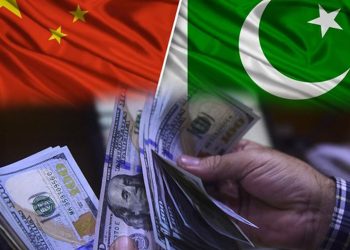According to the annual report just released by the central bank, countries that prioritize growth over pricing and financial stability are unable to sustain growth and are subject to repeating boom-bust cycles.
Because the present government did not prioritize growth for the fiscal year FY23, a significant decline in growth is anticipated. Even so, it hasn’t been able to bring about both pricing and financial stability.
According to a special report of the SBP’s Annual Report, “International experience has repeatedly shown that countries that prioritize growth at the expense of the price and financial stability are not able to sustain growth and have repeated boom-bust cycles—rapid economic growth followed by a financial crisis.”
In the report on ‘State of the Economy for the fiscal year FY22’, the SBP estimates that growth in FY23 would be lower than the low range set for the year. The growth rate will remain lower than 3-4 percent.
The SBP refrained from stating a new growth rate range, but foreign credit rating agencies have been projecting it to be in the region of 2 percent.
Heavy layoffs from the commerce and industrial sectors have already occurred as a result of the sharp decline in growth, and there are more significant layoffs on the horizon.
Significant concerns have been raised by textile millers, exporters, and importers regarding the non-opening of Letters of Credit, which has seriously affected the economic cycle.
Despite focusing on pricing, inflation has been averaging over 25% over the past five months, which has worsened the chances for stability and growth. Under objectives that emphasize more on prices and less growth, it is difficult for commerce and industry to exist.
According to the SBP report, countries where price stability is a top priority typically have lower inflation as well as less volatility in both inflation and growth. “International experience has shown that price stability is a necessary condition for sustained growth and development,” the report stated.
Despite forgoing expansion, the Pakistani government has not succeeded in achieving any of these goals. The medium-term inflation target of 5-7% set by the government reflects the SBP’s goal of price stability.
Supply-side variables, including shifts in the cost of food and energy, can be influenced by both national and global events. The paper stated that it can be challenging to foresee these aspects frequently.
A number of assumptions must be made in order to predict inflation, and they must be revised as new information becomes available.
It was stated that the outlook for global commodity prices and changes in exchange rates play a major role in inflation estimates.
“In Pakistan, the coverage and timeliness of information need improvement and there are often large revisions to ‘annual’ GDP growth estimates relative to provisional estimates. These, together with scarce availability of high-frequency real sector data, complicate forecasting and real-time decision making,” read the SBP report.
The report stated that switching to a market-determined exchange rate while making price stability the primary goal of the central bank is equivalent to changing the nominal anchor of the economy from the exchange rate to an inflation target, around which economic actors are expected to center their expectations and actions.
“This requires the central bank to ‘credibly’ commit to deliver an inflation target,” according to the document.






